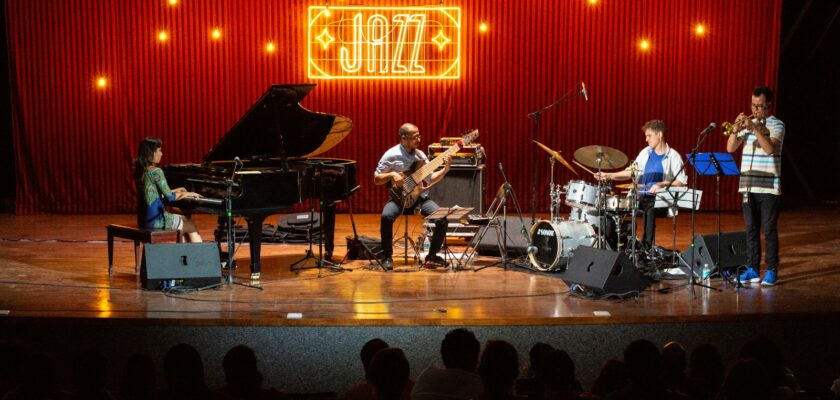The Jazz Conference has emerged as a significant event in the global music calendar, bringing together musicians, educators, scholars, and enthusiasts from around the world to celebrate the rich history and vibrant future of jazz. This conference serves as a platform for dialogue, learning, and collaboration, reflecting the ever-evolving nature of jazz and its profound impact on culture and society.
Origins and Purpose
Founded over a decade ago, the Jazz Conference was created to address the growing need for a dedicated space where jazz professionals could convene to share their experiences, ideas, and research. It aims to promote the art form, enhance the appreciation of jazz, and support the development of emerging talent. With a mission to foster creativity and innovation within the jazz community, the conference has grown significantly in scope and reach.
The purpose of the Jazz Conference extends beyond mere celebration. It strives to provide an educational framework that supports musicians, educators, and students in their pursuit of knowledge and excellence in jazz. Through workshops, panels, and performances, the conference aims to deepen participants’ understanding of jazz, its history, and its role in contemporary society.
Themes and Topics
Each edition of the Jazz Conference is built around a central theme that reflects current trends and issues within the jazz world. Some of the recurring themes include:
- Jazz and Cultural Identity: Exploring how jazz intersects with various cultural identities, this theme encourages discussions about the origins of jazz, its roots in African American culture, and its global influences. Panels often feature musicians and scholars who highlight the ways jazz has served as a voice for social change.
- Innovation in Jazz: The conference promotes the idea that jazz is a living art form that constantly evolves. Discussions on contemporary styles, the incorporation of technology, and the fusion of genres are common, showcasing how today’s musicians push the boundaries of jazz.
- Education and Pedagogy: Recognizing the importance of education in preserving and advancing jazz, the conference offers workshops aimed at educators and aspiring musicians. Topics range from teaching methodologies to the development of curricula that reflect the diversity of jazz music.
- Health and Well-being in Music: An emerging area of focus, this theme addresses the physical and mental health challenges faced by musicians. Discussions often include strategies for maintaining well-being while navigating the demands of a music career.
Conference Format
The Jazz Conference features a diverse array of activities designed to engage participants of all levels. Its structure typically includes:
Keynote Addresses
The conference kicks off with keynote addresses from prominent figures in the jazz world, including celebrated musicians, educators, and historians. These speeches set the tone for the conference, inspiring attendees to think critically about the role of jazz in society.
Panel Discussions
Panel discussions are a hallmark of the conference, featuring experts who delve into specific topics related to jazz. These panels encourage audience participation, allowing for a rich exchange of ideas and perspectives.
Workshops and Masterclasses
Hands-on workshops and masterclasses provide invaluable opportunities for participants to learn directly from experienced jazz musicians. These sessions cover a range of skills, from improvisation techniques to songwriting and arranging.
Performances
One of the most exciting aspects of the Jazz Conference is the live performances. Each evening, attendees can enjoy concerts featuring both established artists and emerging talent. These performances not only showcase the best of jazz but also foster a sense of community among musicians and fans alike.
Networking Opportunities
The conference is designed to facilitate networking among participants. Informal gatherings, meet-and-greets, and dedicated networking sessions allow attendees to forge connections that can lead to collaborations, mentorships, and career opportunities.
Impact on the Jazz Community
The Jazz Conference has had a significant impact on the jazz community, providing a vital platform for dialogue and collaboration. It has played a crucial role in fostering a sense of belonging among jazz musicians and enthusiasts, creating a space where diverse voices can be heard and appreciated.
Furthermore, the conference helps to raise awareness about the challenges faced by the jazz community, including issues related to funding, access to education, and the importance of preserving jazz heritage. By addressing these topics, the conference empowers participants to advocate for the future of jazz.
Conclusion
As the Jazz Conference continues to evolve, it remains committed to its mission of celebrating and advancing the art of jazz. Through education, performance, and collaboration, the conference not only honors the legacy of jazz but also inspires the next generation of musicians and enthusiasts. By providing a space for dialogue and innovation, the Jazz Conference ensures that jazz remains a vital and dynamic force in the world of music, reflecting the complexities of culture and society.
In a time when music can often feel fragmented, the Jazz Conference stands as a testament to the power of community and the enduring spirit of jazz—a genre that has continually adapted and thrived for over a century. Whether you are a seasoned musician or a curious listener, the Jazz Conference offers something for everyone, making it an unmissable event on the musical landscape.
Website : https://jazzconference.net/
